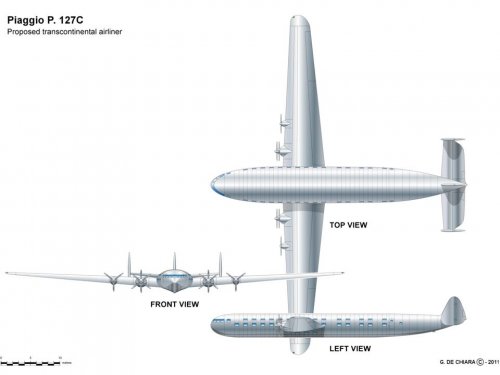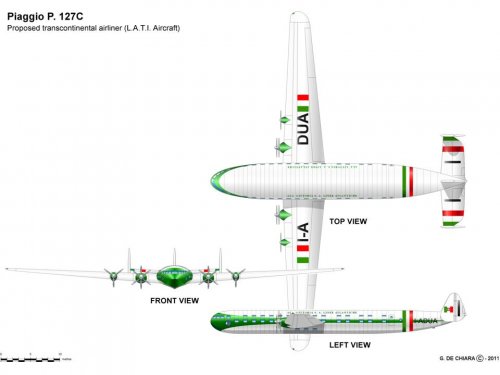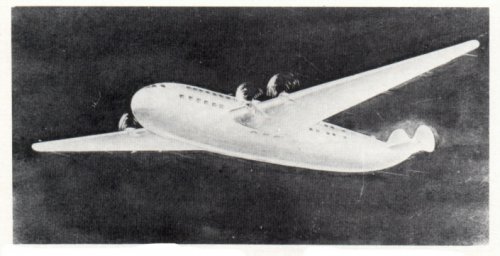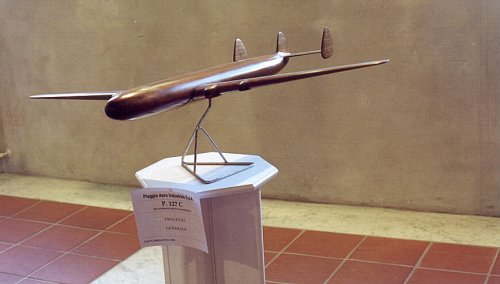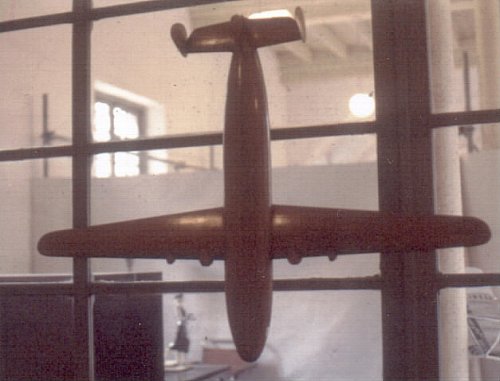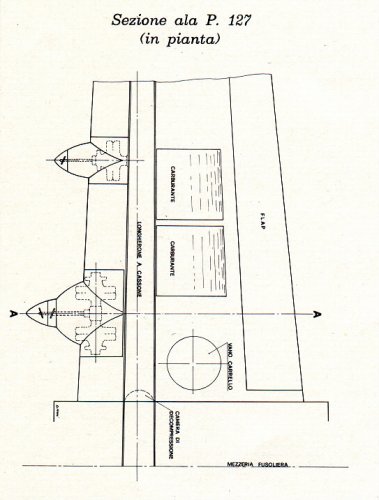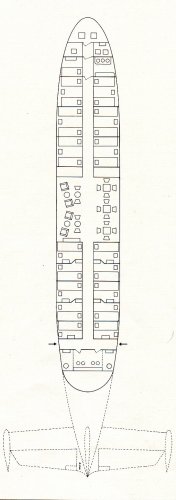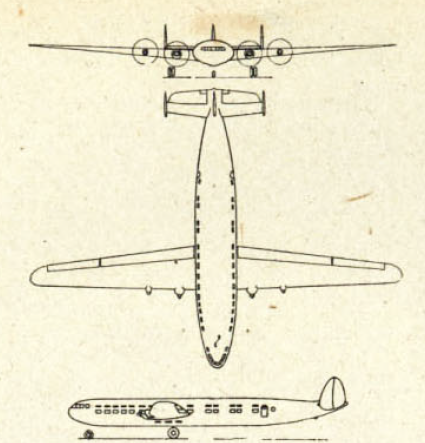archipeppe
ACCESS: Top Secret
- Joined
- 18 October 2007
- Messages
- 2,376
- Reaction score
- 2,778
Another interesting little-known Piaggio project. The P. 127 was started during wartime as possible long range transport aircraft especially for civil role (in that sense it could be a concurrent of both CANT Z-511 and BZ 308).
The P.127C was a huge aircraft (wingspan: 56m, max weight: 56,000 kg) with 6 x 2000 hp engines, 2 in the outer wings alone, and 4 paired (2 per each wing) moving counter-rotating propellers (like the following Bristol Brabazon and Saro Princess). The engine should probably the Piaggio P. XVI or XIX radial ones ranging from 1.700 to 2.000 CV
The P.127C could transport 40 passengers over the Atlantic and it was pressurized. The fuselage had a peculiar shape named "avion marin" designed like a ship's bottom in order to ease an eventual off nominal sea landing.
Some source reports of a bomber version of P. 127 but the few data available refers to the civil P. 127C.
The P.127C was a huge aircraft (wingspan: 56m, max weight: 56,000 kg) with 6 x 2000 hp engines, 2 in the outer wings alone, and 4 paired (2 per each wing) moving counter-rotating propellers (like the following Bristol Brabazon and Saro Princess). The engine should probably the Piaggio P. XVI or XIX radial ones ranging from 1.700 to 2.000 CV
The P.127C could transport 40 passengers over the Atlantic and it was pressurized. The fuselage had a peculiar shape named "avion marin" designed like a ship's bottom in order to ease an eventual off nominal sea landing.
Some source reports of a bomber version of P. 127 but the few data available refers to the civil P. 127C.

